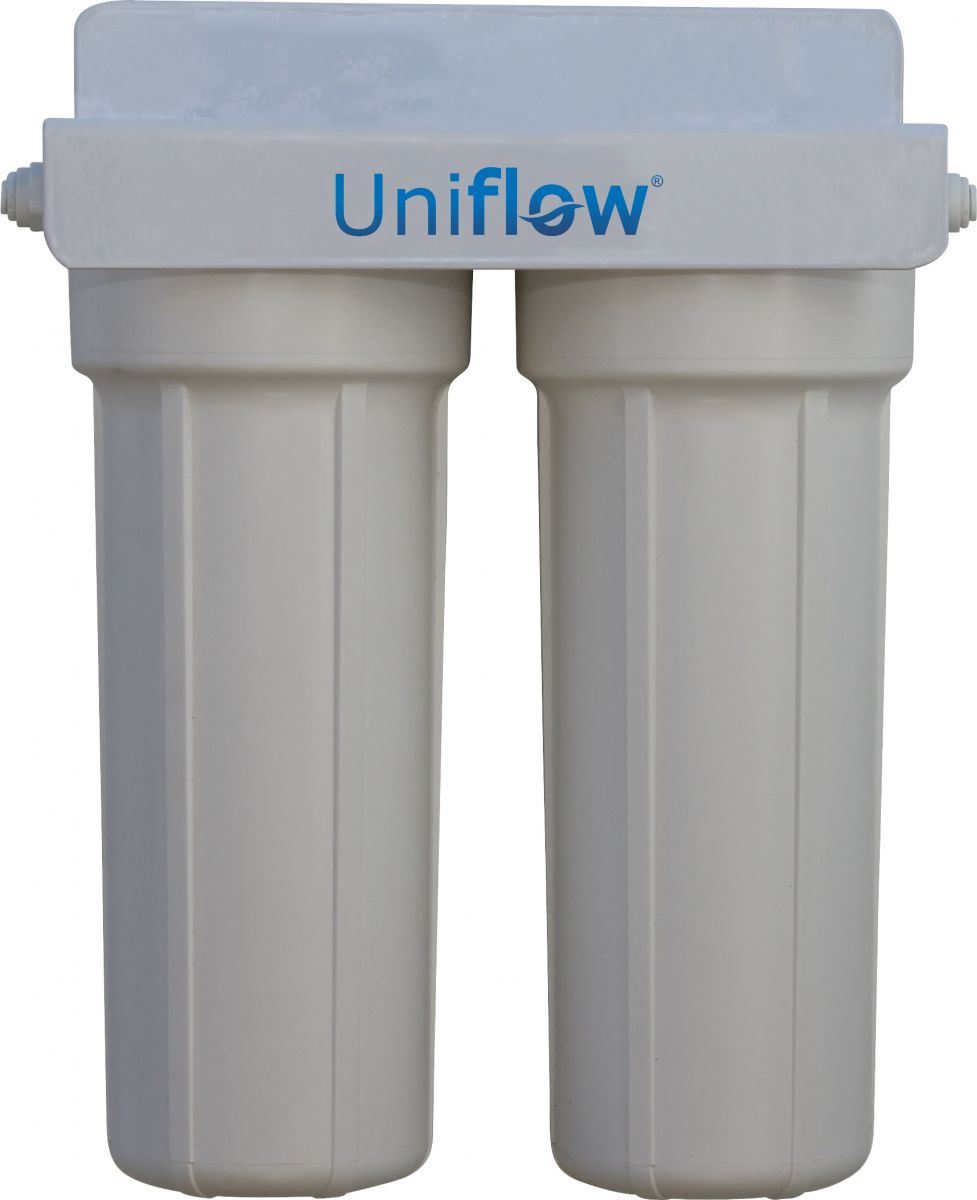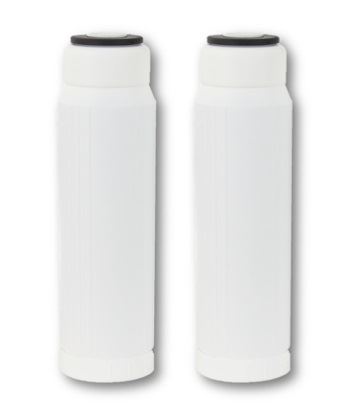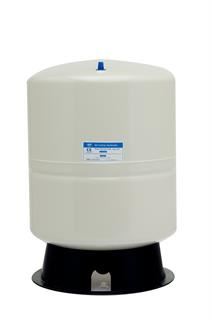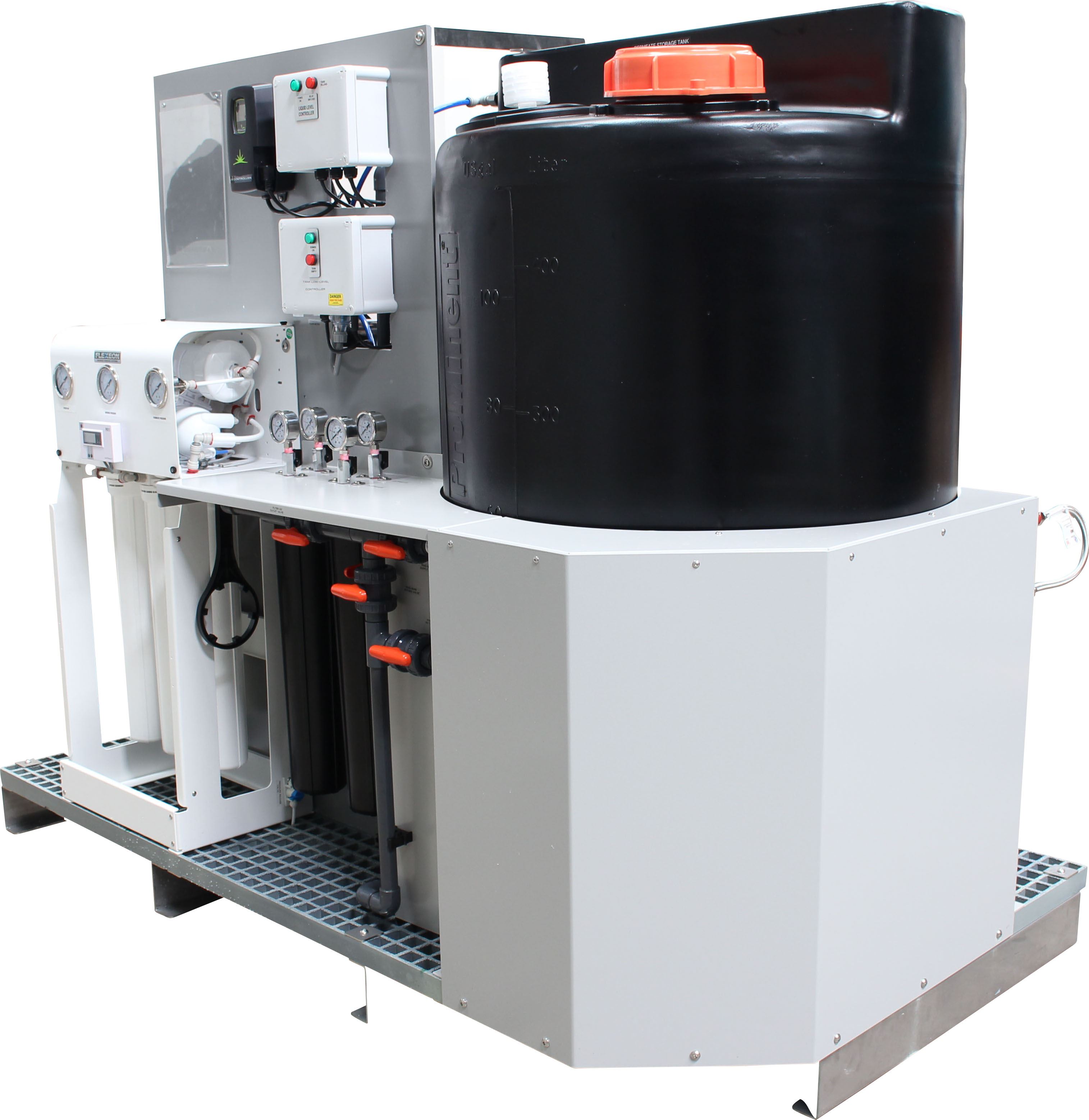With experiance in the medical water industry for over 14 years now, Aquastream knows that many doctors and practice managers have questions about choosing the right water system for your surgery.
Bench-top sterilisers (autoclaves) are fed with water which must be free of impurities, as this can affect the intruments and cause scale build-up pm expensive equipment. Not only that, water must be bacteria free to prevent cross contamination of instruments.
This article covers some of the main differences between a simple Mixed-Bed-Resin Demineralised Water System and the more advanced Reverse Osmosis Demineralisers available on the market today.
Mixed-Bed-Resin Demineralisers - What's Inside?
 These Mixed-Bed-Resin system looks like an undersink water filter system, having two or more filter housings which hold a cartridge-style demineralising cartridge.
These Mixed-Bed-Resin system looks like an undersink water filter system, having two or more filter housings which hold a cartridge-style demineralising cartridge.
Each of these cartridges holds a volume of small resin beads (0.5 - 1mm diameter) held between two filter pads to prevent them from escaping. These beads are typically porous, providing a high surface area, and are used to either exchange positive ions (cations) or negative ions (anions).
Mixed-bed-resin is a mixture of cation and anion beads and will remove both positive and negatively charged ions in the exchange for water forming molecules. Ion exchange occurs where specific ions are being targeted for removal and are swapped (exchanged) for more desireable ions.
As water passes through the cartridges, dissolved solids in the tap water supply are exchanged with Hydrogen and Hydroxide ions which form to make pure, deionised water, free from any impurities.
Once a set of cartridges has been exhausted, they need to be replaced before demineralised water can be produced.
How much water will each set of cartridges produce?
 The amount of water your mixed-bed-resin system can produce is directly proportionate to the conductivity of your water supply.
The amount of water your mixed-bed-resin system can produce is directly proportionate to the conductivity of your water supply.
While many metropolitan areas benefit from high quality municipal water, some regional areas may experiance higher conductivity (sometimes measured as total dissolved solids - TDS). This simply means that the higher the conductivity (or TDS) of your water supply, the harder your system has to work and the less pure water you will produce for each cartridge replacement.
Example: A typical mixed-bed-demineraliser such as the Uniflow Compact Demineraliser uses 2 resin cartridges and with an incomming water conductivity of 700 EC (microsiemmens), will typically produce 120 Litres of high purity water before the cartridges are exhausted.
If however the conductivity of your water is at 300 EC, the pure water capacity of your system could be closer to 240 Litres per cartridge set.
What is the benefit of a Reverse Osmosis Demineraliser?
 Reverse osmosis technology is used extensively in medical and dental water purification and is recognised for it's ability to consistantly reduce the dissolved solids to low levels.
Reverse osmosis technology is used extensively in medical and dental water purification and is recognised for it's ability to consistantly reduce the dissolved solids to low levels.
Reverese osmosis is the process of osmosis in reverse (read more about RO here) and utilises a membrane with a pore size of 0.0001 microns, one millionth of a human hair in diameter.
The benefit of using reverse osmosis technology in dental demineralised water systems is that a consistent, low-conductivity water supply is produced by the membrane, leaving only very low levels of dissolved solids that require removal by the final mixed-bed-resin cartridge which is used as a "polising" filter.
While reverse osmosis demineraliser systems are more costly to purchase and install, surgeries using larger volumes of water can cut costs on demineralised water and have the added benefits of on-site pure water production.
Benefits of Reverse Osmosis Systems include:
- Compact under-sink and under-bench installation
- Low-frequency maintenance
- Consistent high purity water production
- Ability to connect to multiple autoclaves and chairs
- Reduced overall demineralise water costs
How is demineralise water stored in the RO system?
Reverse osmosis systems can either be connected to a pressurised storage tank or used to fill an atmospheric tank which is in turn pumped to equipment using a pressurised reticulation system.
 Pressurised Storage Tanks
Pressurised Storage Tanks
Pressurised storage tanks are filled by the reverse osmosis system with purified water which is stored under pressure for direct supply to sterilisers, chairs and rinsing basins. By positioning the final mixed-bed-resin after the pressurised storage tank, water is "polished' ont he way to equipment, ensuring ptimum quality.
While bladder tanks are simple and effective, one limitation you may experiance is the ability to connect multiple sets of sterilisers and chairs due to the supply flow rates. As a guide, pressurised storage systems are typically limited to supply flow rates of 10-15 litres per minute.
In some cases, installation of a second Reverse Osmosis System and pressurised storage tank will be the best solution. Alternatively, an atmospheric storage system may be considered.
Atmospheric Storage Systems
 Where larger flow rates of water are required to support multiple surgeries, consideration could be to install a larger atmospheric storage system that can be located in a central plant room and supply water to a pressurised ring main system.
Where larger flow rates of water are required to support multiple surgeries, consideration could be to install a larger atmospheric storage system that can be located in a central plant room and supply water to a pressurised ring main system.
The Uniflow MultiPure Dental Water System is designed to suit large-scale dental and oral health centres, providing a compact atmospheric storage and pressurised distribution system.
Fitout designers should contact the Aquastream technical support team to discuss your application and system designs on 1800 446 500
Summary of Solutions
To summarise our advise, your particular application will determine the right demineralised water system you need. Here are some points we have covered above:
Mixed-bed-resin type demineralisers:
- Mixed-bed-resin cartridge based demineralised water systems like the Uniflow Compact are ideal for small surgeries with a single chair and/or autoclave.
- The pure water output of a mixed-bed-resin system is based on the conductivity of your water supply - Higher conductivity means less pure water per cartridge change-out
- Mixed-bed-resin systems utilise single-use cartridges which are discarded when used.
Reverse osmosis type demineralisers:
- utilises a low-maintenance membrane filter to reduce the conductivity to low levels, leaving the final mixed-bed-resin cartridge to "polish" the water to high purity
- are suited to dental surgeries with two or more autoclaves and chairs
- can save on demineralised water cost in larger surgeries with high water costs
- can be used to fill pressurised storage tanks or incorporated into atmospheric storage systems
Busy dental surgeries running multiple sterilisers and chairs will use large volumes of demineralised water, making it impractical cost-wise and logistically to purchase demineralised water in containers.
Health and safety benefits are also achieved by connecting autoclaves and chairs directly to an automatic demineralised water system by providing a plumbed-in water supply to equipment and reducing lifting and handling issues.
For more information on Aquastream's premium dental water solutions, contact our friendly team on 1800 446 500
